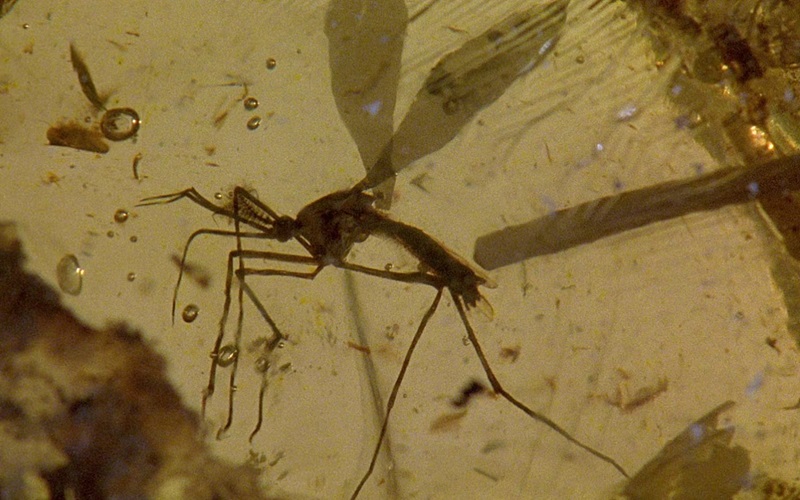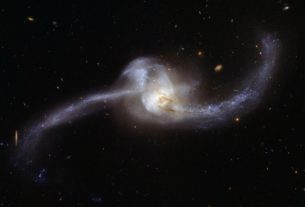A team of paleontologists describes the discovery of several mosquitoes in 125 million year old Lebanese amber. They represent a new species. Unexpectedly, the males appeared to have piercing proboscis armed with pointed mandibles and were probably bloodsucking like today’s females.
An exceptional discovery
Female mosquitoes, well known for their hematophagy (feeding on blood), are insects that can cause allergic reactions and act as vectors of various microbial pathogens.
Hematophagy in insects, which probably developed from a diet based on plant fluids, involves the use of piercing-sucking proboscises that evolved to allow perforation of vertebrate skin. However, the origins of these dietary habits remain unclear due to the paucity of the fossil record, particularly for sufficiently ancient lineages that would provide insight into the paleoecological context of the emergence of the blood diet, hence the interest of this discovery.
A team announces that it has identified several mosquitoes in Lower Cretaceous amber in Lebanon. Around 125 million years old, they represent the oldest lineage of mosquitoes.
Bloodsucking males
The two males in question here are of the same species named Libanoculex intermedius and have piercing proboscis with mandibles, suggesting that they were probably bloodsucking.
The hematophagous behavior observed in these male mosquitoes from the Lower Cretaceous, although surprising given the current diet of male mosquitoes which generally feed on nectar, plant sap or honeydew, is not completely new if we enlarge a bit of the picture. Male hematophagy is in fact known in existing Psychodidae (nematoceran dipterans which resemble tiny moths) and in some cyclorhaphouous brachyceran flies. Rare cases of hematophagy have also been reported in male Culicidae (a genus of mosquitoes), but with an apparently toxic effect on the insect.
Regardless, the presence of blood-feeding males in other lineages, as well as rare cases in the Culicidae, suggests that perhaps it should not be so surprising to find such feeding in a Cretaceous male mosquito.
This discovery nevertheless has important implications. First, it extends the confirmed presence of the mosquito family to the Lower Cretaceous, thus providing a wider temporal window to study their evolution. Additionally, these specimens challenge preconceived notions that only female mosquitoes were bloodsucking. Ultimately, it helps bridge the gap in our understanding of the origins and evolution of mosquitoes, providing valuable information about the fossil lineage of these insects.




